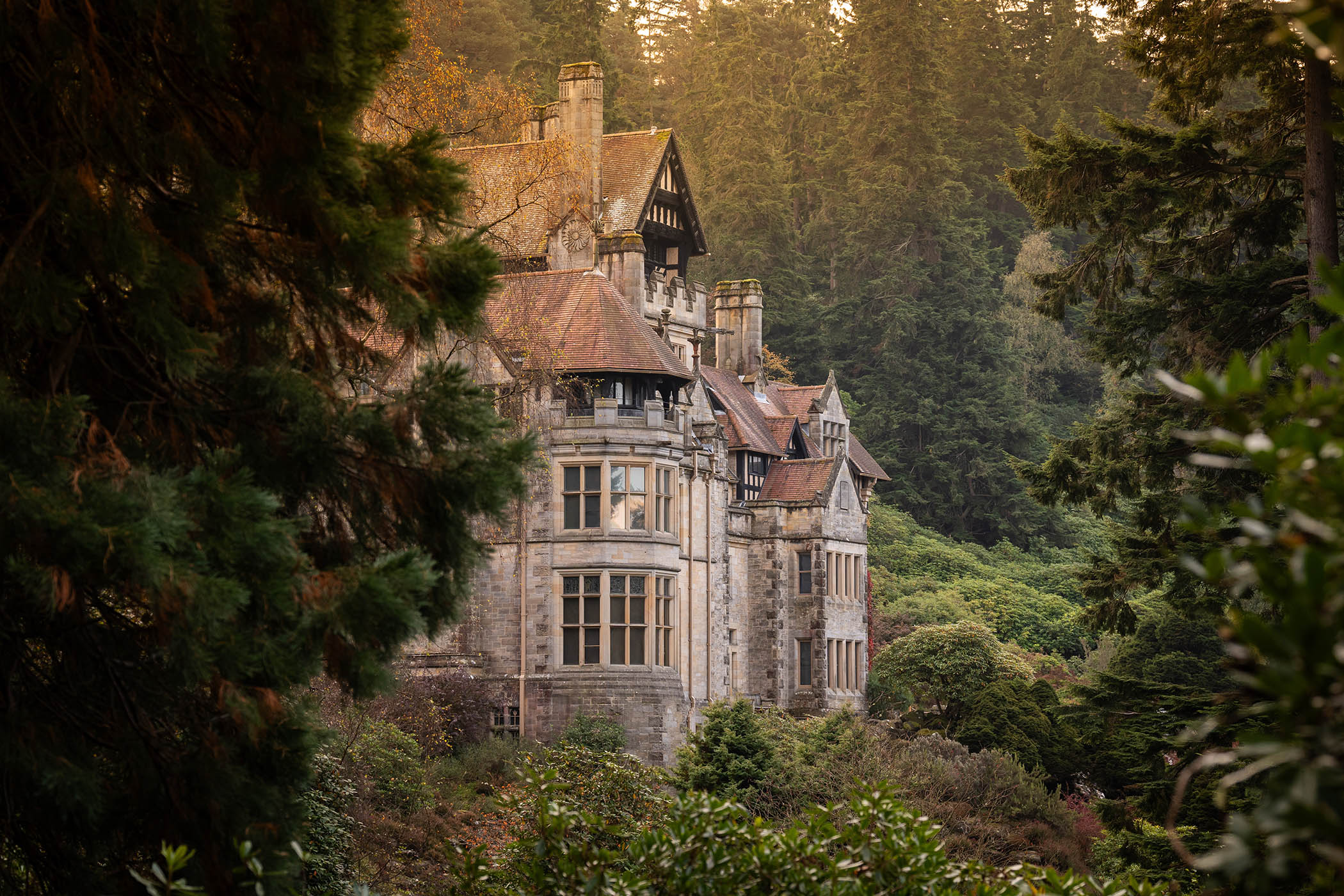On a steep slope north of Newcastle stands Cragside, a Victorian pile-up of gables, battlements, chimneys, gargoyles and half-timbering; a teetering composition of projection and recession designed to be seen in upward perspectives. Largely the work of the Victorian architect Richard Norman Shaw, it looks as though a load of interwar semi-detacheds have been heaped on top of a castle. The fantastical chimney breast in its living room – the size of a normal house front – is encrusted with bas-reliefs of nudes, scrolls and classically inspired fruit and veg, and propped on Ionic columns of nougat-like marble.
The house was, despite its medieval and Tudor inspirations, packed with what was new technology for the time: lifts, electric light, hydraulic pumps. It was the home of Sir William Armstrong, a man who made his fortune making and selling more lethal and effective armaments than anyone before.
Cragside, built from 1869 to 1895, marked a time when it was felt that the force and wealth of industrial innovation was best expressed through romantic evocations of the past. It was an exceptionally lavish demonstration of the theory that an Englishman’s home is his castle. “East or West, Hame’s Best,” reads the cosy Scots motto engraved above the dining room fireplace in this near-Wagnerian edifice.
Cragside is the fifth of eight case studies through which Dan Cruickshank sets out to tell his architectural and social history, from 1712, with Pallant House in Chichester, up to 1926, with New Ways in Northampton, arguably the first modernist house in Britain. Cruickshank is an architectural historian whose infectious passion for heritage has lit up TV screens in programmes such as Britain’s Best Buildings and Civilisation Under Attack, and he is at his most authoritative when describing details of decoration and construction. But he also likes a good human story, like the court proceedings between the wife and husband who owned Pallant House over the costs of its construction, which fortuitously left a trove of information about building methods of the time.
Despite its medieval and Tudor inspirations, Cragside was packed with new technology: lifts, electric light, hydraulic pumps
Cruickshank was part of a 1970s campaign to save the extraordinary Georgian houses of Spitalfields, in east London, from the developers’ bulldozers – and he has lived there for decades. His most vivid chapter describes the history of 19 Princelet Street, an address in the area that was at different times the family house of prosperous Huguenot silk-weavers and multiply occupied by impoverished refugees from Russian pogroms. Forty-eight people, according to the 1891 census, lived in the neighbouring abode, No 17.
A synagogue was built in No 19’s back garden in 1870, and in the 20th century an attic room became the cluttered home and study of the “enigmatic scholar” David Rodinsky. Illustrating these stories are an elegant rococo fireplace from the weavers’ time, plus evidence of alterations to the fabric of the house, panelling and paint layers. Scraps “of playfully patterned wallpaper” reflect, as Cruickshank puts it, both changing fashions “and the hopes and dreams of the poor occupant of the room”.
Princelet Street apart, Cruickshank’s choices include five singular houses built for rich clients, and two examples of working-class housing. He treads cautiously around the slave trade-based wealth with which the Heywood family built a theatrical house-cum-bank in Liverpool in 1798-1800, trying to reconcile his appreciation of the architecture with the atrocities behind it. He describes the streets of two-up, two-down “bye-law” houses built in Toxteth, Liverpool, from the 1860s to the 1890s and the pioneer council housing of the Boundary Estate of 1890-1900, about half a mile to the north of Princelet Street. He tells how the latter, beautifully planned and designed though it was, did nothing for the destitute dwellers of slums formerly on the site, evicted when houses were demolished to make way for the estate.
It’s a somewhat lopsided selection, made more so by Cruickshank’s fascination with the 18th century, which accounts for half the examples. He could have talked more about those homes for people neither rich nor poor, such as 1920s and 30s suburban houses, and about buildings built both before Pallant House and in the century since New Ways. Tantalisingly, the book mentions and illustrates older marvels such as Haddon Hall and Hardwick Hall, both in Derbyshire, without going into much detail.
You might detect a narrative whereby industrial and extractive wealth paid for increasingly imposing and escapist houses, culminating in Cragside, before the Toxteth housing and Boundary Estate attempted to mitigate its effects on workers, with New Ways representing a desire to embrace modernity rather than smother it in fantasy. But Cruickshank doesn’t stress this line of argument. Instead, the guiding logic of this diverting and illuminating book is Cruickshank’s enthusiasm and knowledge. Fortunately, he has plenty of both.
The English House: A History in Eight Buildings by Dan Cruickshank is published by Hutchinson Heinemann (£26). Order a copy from The Observer Shop for £23.34. Delivery charges may apply
Editor’s note: our recommendations are chosen independently by our journalists. The Observer may earn a small commission if a reader clicks a link and purchases a recommended product. This revenue helps support Observer journalism
Photograph of Cragside courtesy of National Trust Images/Rebecca Hughes

